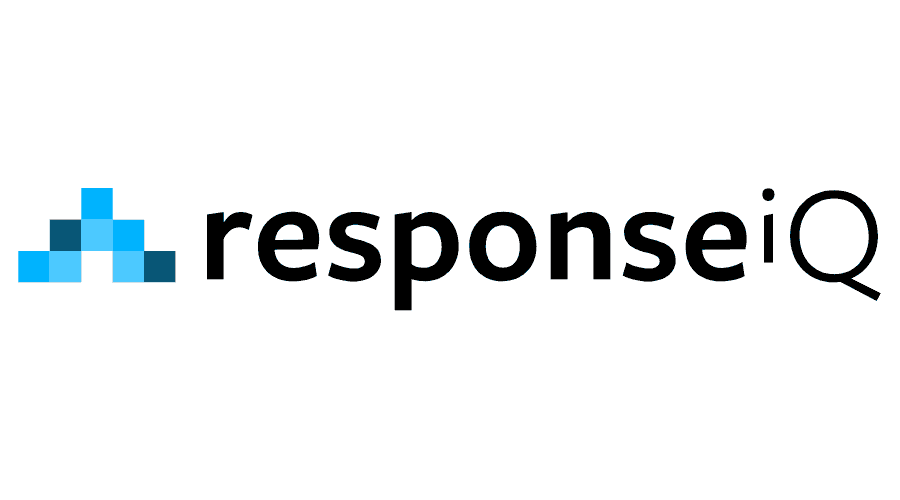What is B2B Prospecting? 10 Methods to Engage Prospects
B2B prospecting resources:
B2B prospecting isn’t just a numbers game anymore - it’s about precision.
In a world where buyers are bombarded with sales pitches, standing out takes more than making phone calls and sending generic emails.
You need smart targeting, personalisation that actually resonates, and a strategy built for speed and efficiency.
The old-school spray-and-pray approach? Dead! The future of prospecting is data-driven, tech-powered, and hyper-relevant.
In this guide, we’ll explain how the best sales teams find, engage, and convert prospects into customers.
Ready to sharpen your prospecting game? Let’s go 👇
What is B2B prospecting?
Whether you’re a newbie rep or a seasoned B2B sales professional looking for a refresher, here’s a definition of the toughest gig in B2B sales:
B2B prospecting is the process of identifying and engaging potential business customers to generate sales opportunities. It involves researching, qualifying, and reaching out to decision-makers through channels like cold calling, email, and social media to build relationships and drive revenue.
Who are B2B prospects?
A B2B prospect is any person or organisation that fits your ideal customer profile (ICP) but hasn’t yet expressed an interest in your company.
It’s your sales and marketing team’s job to make potential buyers aware of your product or service and convert them into satisfied customers.
What are the different types of B2B prospects?
There are two types of B2B prospects:
1. Sales prospects
Sales prospects are people or organisations who match your ICP and are deemed suitable for prospecting.
This group includes:
- B2B buyers who are contacted by phone, AKA cold calling.
- A list of prospective customers contacted via outbound email.
- Prospects who sales reps connect with on social media channels.
- Prospects who are contacted via a combination of these methods (also known as a sales cadence).
2. Marketing prospects
Marketing prospects are those people or organisations who have engaged with your brand's content marketing, thereby expressing interest in your offering.
For example:
- Registering for a demo via a CTA on your company’s blog.
- Filling out a form on your company’s website.
- Downloading a piece of content that your marketing team has produced.
Why is B2B prospecting important?
It’s fundamental to business growth!
Prospecting is about finding and signing new customers; without a serious B2B sales prospecting strategy, your company will stall.
Efficient B2B prospecting ensures:
- A consistently filled sales pipeline.
- An accelerated sales cycle.
- Better communication between sales and marketing.
- Improved outreach attracting quality leads.
- Optimised outreach campaigns.
- And best of all - more incoming revenue!
What are the top B2B prospecting strategies?
Many sales activities play a role in B2B lead prospecting, which can be divided into two categories: outbound prospecting and inbound prospecting.
Here are the best ways to find and engage B2B customers 👇
1. Identify Ideal Customer Profile (ICP) and buyer personas
Objective:
Define the types of companies and decision-makers most likely to benefit from your solution.
Key Actions:
- Research industry verticals, company size, geographic location, pain points, and challenges your product or service solves.
- Develop buyer personas, including roles (e.g., C-level executives, managers), responsibilities, and motivations.
Did you know that Cognism is a powerful AI-powered tool for identifying qualified leads?
Use the platform’s demographic, firmographic and technographic filters to build a complete picture of your potential customer.
Better yet, use Cognism’s AI Search feature - simply type (or speak!) your request into the AI Search bar, sit back and watch Cognism’s high-quality prospecting data roll in!
Take an interactive tour of Sales Companion👇
2. Build a prospect list
Objective:
Create a targeted list of potential leads based on your ideal customer profile.
Key Actions:
- Use sales prospecting tools like Cognism or its competitors to generate lists of companies, key decision-makers and their contact details.
- Organise prospects into segmented lists (by industry, company size, etc.) to allow for more personalised outreach.
⚠️ Use Cognism to build contact lists of your potential clients.
3. Conduct research on prospects
Objective:
Gather relevant information about each decision-maker to personalise outreach and understand their needs.
Key Actions:
- Research the prospect’s business model, recent news, pain points, and competitors.
- Look at their social media profiles, company websites, and industry reports to gain insights into their challenges and goals.
4. Initiate outreach
Objective:
Make initial contact with prospects using the appropriate B2B prospecting techniques.
Key Actions:
- Cold emailing - Reference something specific about the potential prospect’s company or role; this personalises your sales emails. In the email copy, address their pain points and suggest a solution.
- Cold calls - Make phone calls to high-value accounts or more urgent prospects. Keep the conversation short; focus on setting up a meeting rather than pitching immediately.
- LinkedIn prospecting - Send a connection request with a personalised message, followed by sharing relevant content or insights.
5. Follow up and nurture prospects
Objective:
Build genuine relationships with promising leads or maintain contact with those who haven’t responded and need more nurturing.
Key Actions:
- Send or make follow-up emails and calls based on the prospect’s engagement or previous conversations.
- Share valuable content like case studies, whitepapers, or industry news that addresses their challenges.
- Engage with prospects on social media platforms, commenting on their posts or sharing useful insights to stay on their radar.
6. Qualify the prospects
Objective:
Determine whether the prospect is a good fit and ready to move further in the sales process.
Key Actions:
- Use qualification frameworks like BANT (Budget, Authority, Need, Timeline) or CHAMP (Challenges, Authority, Money, Prioritisation) to assess whether the prospective customer meets key criteria.
- Ask open-ended questions to uncover specific pain points, challenges, and business goals.
- Identify high-level decision-makers and determine budget availability.
7. Schedule a discovery call or meeting
Objective:
Move interested prospects to a deeper conversation. At this stage, you must further assess fit and present solutions.
Key Actions:
- Propose a meeting or discovery call to delve into their business challenges and how your solution can help.
- Prepare for the call by revisiting your research and aligning your solutions with the prospect’s needs.
8. Handle objections and build trust
Objective:
Address any concerns or sales objections the prospect may have. The goal here is to solidify their trust in your solution.
Key Actions:
- Be prepared to answer questions about pricing, competitors, or key features.
- Use case studies, testimonials, or success stories to prove value and build credibility.
- Offer a trial or demo to let prospects experience the product firsthand.
9. Close or transition to your sales team
Objective:
When ready, send the prospect to your account executive team. This stage involves negotiation and deal closing.
Key Actions:
- If you’re a sales development rep (SDR), hand off the qualified lead to the account executive (AE) or sales team for closing.
- If you’re an AE, negotiate terms, present pricing, and finalise the deal.
10. Track and analyse performance
Objective:
Continuously improve the prospecting process by measuring success and learning from data.
Key Actions:
- Use your CRM or B2B sales tools to track prospecting activity, response rates, and conversion rates.
- Review your outreach efforts to determine what worked and what didn’t. Adjust your strategy based on your performance metrics.
What are examples of B2B prospecting?
These are the top B2B prospecting methods:
Cold calling
Despite being considered a traditional sales tactic, it’s still a highly effective sales prospecting method, especially when targeting a niche market.
Personalisation and researching the target company beforehand (plus having quality sales data at your fingertips!) can significantly improve results.
Cold email outreach
Cold emailing is a more scalable and less intrusive alternative to cold calling.
With proper research, segmentation, and personalisation, it’s an excellent way to initiate conversations with potential business clients.
Use automation and cold email tools to help scale the process.
LinkedIn prospecting
LinkedIn is one of the most powerful platforms for B2B prospecting.
Sales reps can use LinkedIn’s advanced search features to find decision-makers, send personalised connection requests, and engage in meaningful conversations.
⚠️ See how Cognism compares to LinkedIn Sales Navigator.
Referral programs
Asking for referrals from current customers, partners, or B2B business networks is an excellent way to get highly qualified sales opportunities.
Referral leads are often warmer because they come with a recommendation.
Networking events and conferences
Industry events, trade shows, and conferences offer great opportunities to meet potential clients face-to-face.
By attending relevant events, your sales team can make direct connections and follow up with them later.
Inbound lead qualification
Use inbound marketing techniques like SEO, PPC ads, and webinars to attract potential buyers.
Then, use lead scoring processes to identify the most promising prospects for your sales agents to follow up with.
Social selling
The best sales professionals frequently engage with prospects on social media platforms.
They comment on posts, share useful information, and engage in discussions relevant to their industry. This sales prospecting technique is good for nurturing relationships that lead to qualified opportunities.
CRM and marketing automation tools
Tools like Salesforce, HubSpot, or Pipedrive automate parts of the prospecting process, including managing customer prospecting data, sending cold outreach, and nurturing leads through the sales funnel.
Account-Based Marketing (ABM)
ABM focuses on targeting specific high-value accounts.
In this sales prospecting approach, sales and marketing teams work closely to create highly personalised campaigns aimed at companies or individuals. This method, while time-consuming, often increases the likelihood of conversions.
⚠️ For more information, check out Cognism's guide to account-based marketing (ABM).
B2B prospecting FAQs
What is the best prospecting technique?
Apart from the B2B prospecting methods we’ve already covered, the best way to find potential customers is to use technology.
Sales intelligence platforms like Cognism make the process of finding target customers quick and easy - scroll 👇 to hear from one of our customers.
How do you build a B2B prospect list?
To build an effective prospecting list with accurate names and contact details, you’ll need a contact data provider like Cognism or ZoomInfo.
When ResponseiQ switched from ZoomInfo to Cognism, the company’s sales process improved massively:

Founder & CEO @ResponseiQ

What is the best B2B prospecting tool?
Cognism is one of the best tools for finding qualified prospects. We’re the choice for you if:
- You work in B2B - our data isn’t for B2C businesses.
- You work in a sales, marketing, or RevOps team - our data isn’t for sole traders.
- You want to connect with other businesses - our prospecting data can’t help you connect with freelancers.
- You want to target EMEA, DACH, or the USA - our data is best in these regions.
- You’re concerned about compliance -we’re a fully compliant B2B prospecting tool.


%20-%20Resource%20Card-1.png)